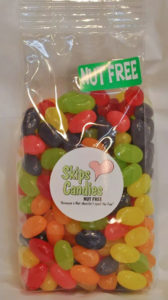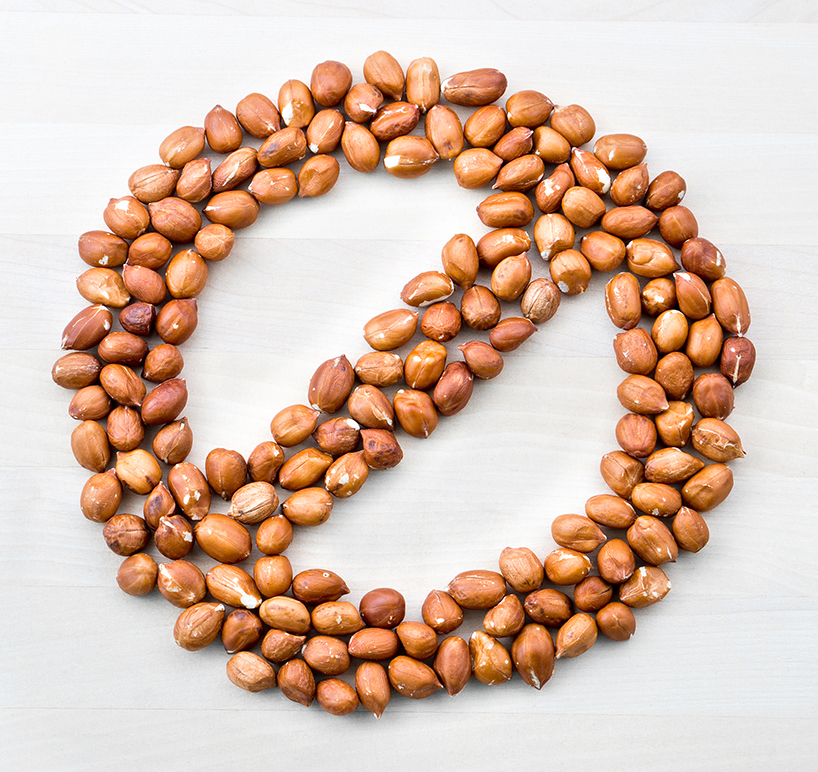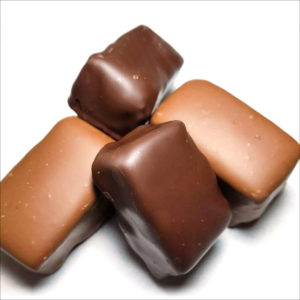
Easter candy is big business. Last year, Americans spent $2.6 billion on things like jelly beans, chocolate eggs and marshmallow chicks.
We expect this year will be the same, with countless parents heading to their local bulk candy store to find treats to populate their kids’ Easter baskets.
And it got us thinking: How did Easter, first and foremost a religious observance, turn into big business for candy companies?
In this blog post, we’ll look at the history of Easter and Easter candy.
Easter and Eostre
Why do we call Easter “Easter”?

To answer that, we need to go back to the 6th century, when Pope Gregory sent a group of monks to England to convert the Britons to Christianity.
Essentially, this meant letting the early Brits keep the basics of their seasonal festivals, only with a Christian twist.
As the British magazine The Field put it, those feasts gradually became days to honor Jesus or one of the Christian saints.
One of those Anglo-Saxon feasts was the celebration of the goddess Eostre, whose feast was in the springtime, around the same times Christians marked the resurrection of Jesus. Eventually, the feast of Eostre became known as “Easter.”
Pennsylvania’s Easter connection
Although he’s not part of the Christian Easter tradition, the Easter Bunny has become a key part of Easter celebrations.

No one is sure exactly how that happened, but rabbits are an ancient symbol of life and fertility. People in Germany told stories of the “Osterhase,” a hare that lay eggs.
German kids would make nests where the Osterhase would leave his eggs. This tradition would eventually come to America in the 1700s when immigrants from Germany arrived in Pennsylvania.
As time went on, the tradition evolved. The rabbit didn’t just bring eggs, he also delivered candy and little gifts. And instead of making nests, kids began to leave out baskets, along with carrots so the bunny would have something to snack on during his deliveries.
From Easter eggs to chocolate bunnies

Eggs have been a part of Easter celebrations for decades. According to some sources, people began painting eggs during Lent, which is a time of fasting and penance. There was apparently a time when eggs were off-limits during Lent, so decorating them and eating them on Easter was a way of marking that tradition.
Easter candy doesn’t date back that far. Chocolate bunnies first emerged in Europe in the early 1800s, as chocolatiers began mass-producing bulk candy.

The first chocolate molds were made by hand in the 1830s and by the end of the century, mold-making had become an art-form, giving us everything from simple chocolate eggs to lovingly-decorated chocolate bunnies. Cadbury unveiled their Crème Egg in 1875. It remains a popular – although divisive – Easter-time treat.
Another popular Easter treat, jelly beans, date back even further, if you consider them an ancestor of the delicacy known as Turkish delight, which are believed to have first appeared in – where else? – Turkey in the 1700s.

First produced in the 1800s, they became popular during the Civil War when a Boston candy merchant named William Schrafft asked people to send the candies to Union troops.
But jelly beans would not become associated with Easter until the 1930s, perhaps due to their egg-like shape. Today, American candy makers produce 16 billion jelly beans every Easter.
Are you searching for bulk candy this Easter? Turn to Skip’s Candies, where we offer a wide range of Easter candy, from chocolate bunnies to jelly beans to peeps.
And remember that have a dedicated nut-free facility, so that people can enjoy our candy without having to worry about nut allergies. We hope your Easter celebration includes our candies this year.







